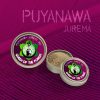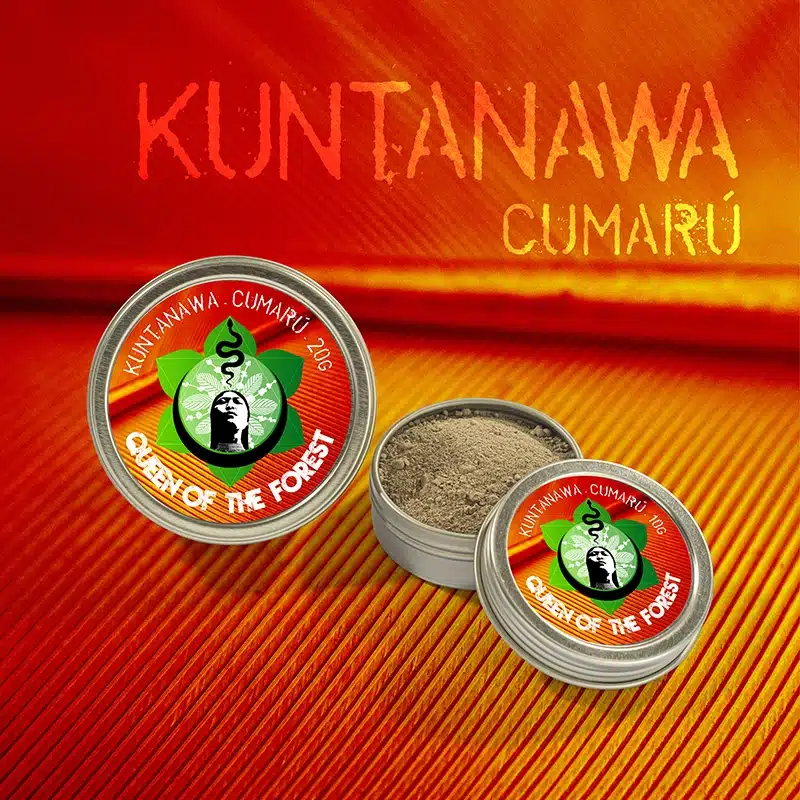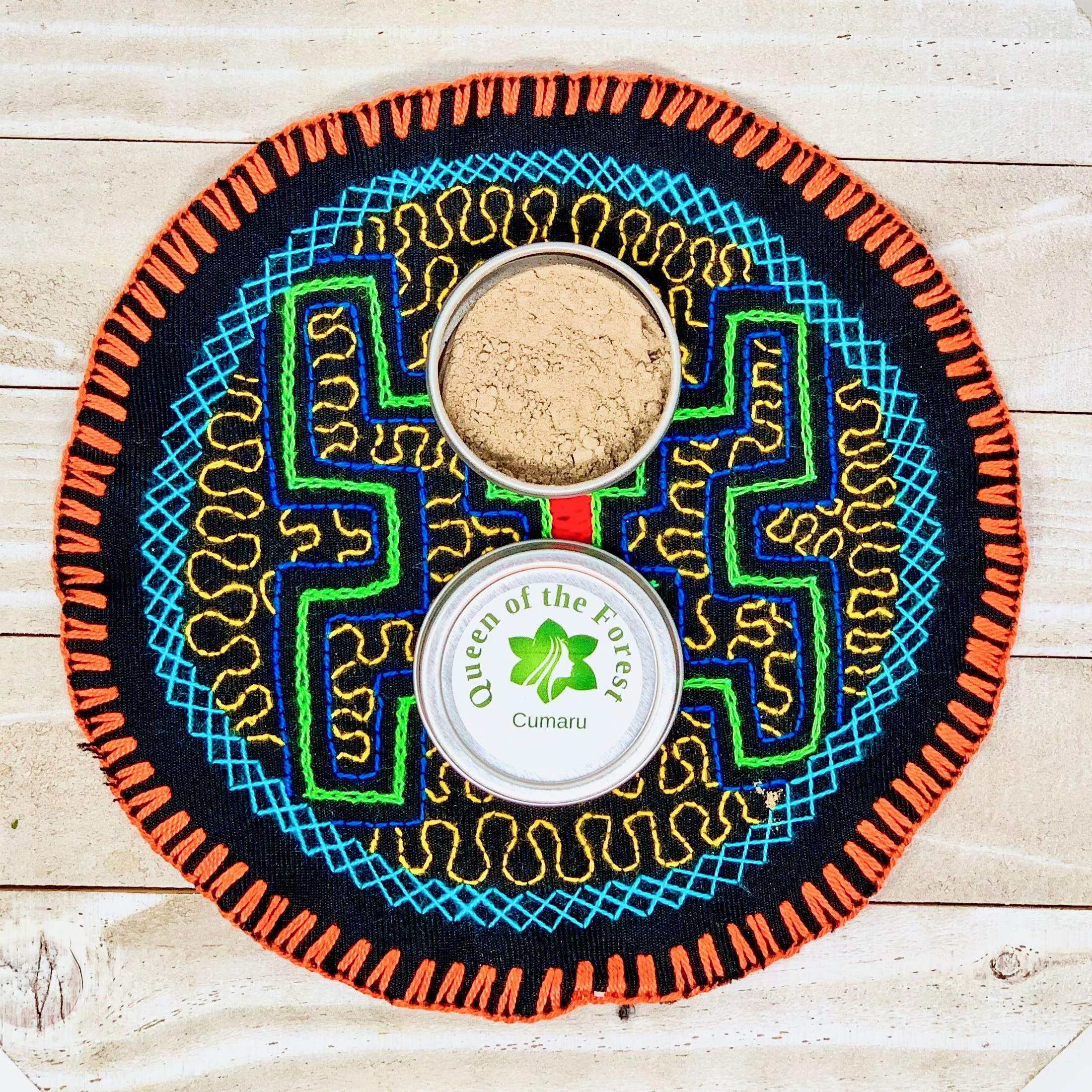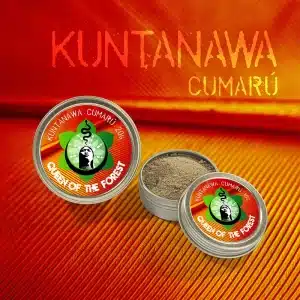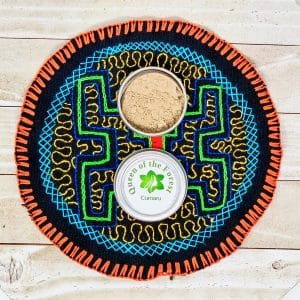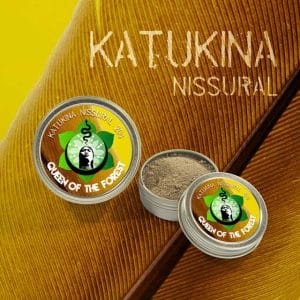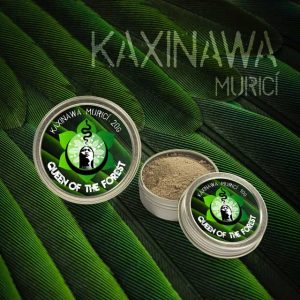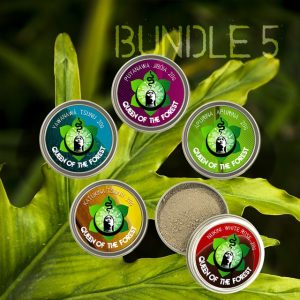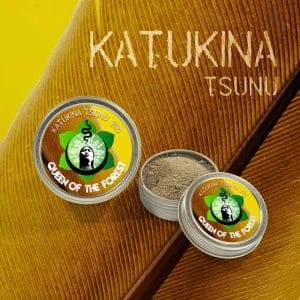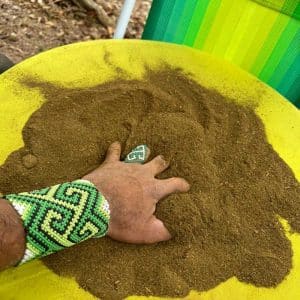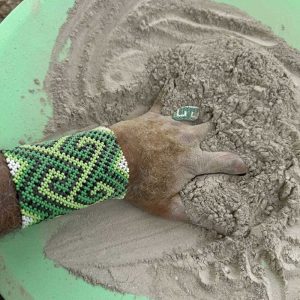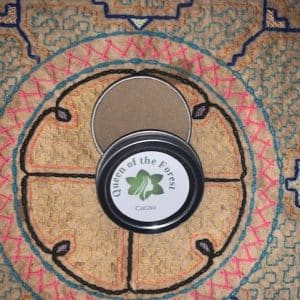Cumaru Sacred Hapé – Intention – Queen of the Forest Rapeh
$37.00 – $155.00
The Cumaru Rapeh Indigenous snuff is a blend of tobacco, ash and the Cumaru plant.
It is rather strong and sensational and can put you in a trance-like state. It will clear the energy centers of your head and open your air passages, allowing for clarity and the receiving of messages. The Cumaru blend is particularly good for meditation and grounding. If there is a specific issue that you hope to gain clarity or insight on, this is a great blend for you.
All of our rapéhs are ethically sourced from indigenous people and intentionally produced with the wisdom, intentions, and prayers of their humble shamans that want to continue living in harmony with our Mother Earth.
The Traditional Rapé snuff is normally made of tobacco powder and other herbs along with different tree ashes blended into fine scented powder that is blown into the nostrils. It has been used since the olden days during different periods and occasions. It has been used by local tribes in the forest who use it for numerous purposes such as medicine for treatment and healing and ceremonial activities. It is known to increase and improve brain activity and provide healing properties to the body.
The work that we do, the products we offer come from the tribes and villages of the rainforest. These are the people that protect, nourish and preserve the rainforest, they are only there with the help of people like us, that are willing to do the work of reaching them and supporting their lifestyle and hard work. All of our products are 100% organic, made by actual tribes, with the prayers and intention of humble people wanting to continue living in harmony with our Mother Earth.
How is Rapeh taken or given?
The administration of Rapeh involves the use of specialized tools and techniques, carefully crafted and designed to ensure a safe and meaningful experience. The process begins with a V-shaped pipe, known as a ‘Kuripe,’ which is used to deliver the Rapeh to the sinuses. The Kuripe is placed in the user’s mouth and one nostril, allowing for precise delivery when blown.
The manner in which the Rapeh is blown into the sinuses can have an impact on its effects. Different tribes have distinct techniques for blowing the Rapeh. For instance, the Katukina tribe describes the ‘Turtle’ blow as a gentle and prolonged delivery method, contrasting with the ‘Hummingbird’ blow, which is short, sharp, and strong. There is also the ‘Deer’ blow, which lies somewhere in between these two methods.
Administering Rapeh carries an energetic component, though it is difficult to quantify. The individual delivering the Rapeh, the environment in which it is taken, and the underlying intention all contribute to the overall experience. These considerations are crucial to ensuring a meaningful and safe session.
When someone else administers Rapeh to an individual, a longer pipe called a ‘Tepi’ is utilized. The giver inserts the Tepi into the recipient’s nostril and delivers the Rapeh with a blow. Several factors come into play during this process, including the specific type of Rapeh being used, the strength of the blow, and the expertise of the individual administering it.
Traditional tools such as the Kuripes and Tepis are often handcrafted within the tribe using materials like bamboo or animal bones. The bones used in the construction of these tools are typically sourced from animals that were hunted for sustenance. This approach maximizes the utility of each hunt while also reflecting the indigenous Amazonian tribes’ deep respect for the resources of nature.
Approaching the administration of Rapeh with respect, cultural understanding, and guidance from experienced practitioners is essential. Those with expertise can provide appropriate techniques and dosage recommendations to ensure a safe experience. The combination of these factors contributes to the overall ceremonial and spiritual significance that the use of Rapeh holds in indigenous Amazonian cultures.
What do customers say about Rapeh?
Customers have expressed positive experiences and benefits from using various types of Rapeh. One customer noted that Yawanaw For a Feminina rapeh helped them clear stress and anxiety. Another customer found relief from pain through the use of Kuntanawa Louro rapeh. Additionally, a customer reported feeling a newfound sense of well-being and peace within just four days of using rapeh. Lastly, using Katukina Jurema rapeh enabled one customer to connect with their spirit guides. These testimonials highlight the positive impact of Rapeh on customers’ mental and physical well-being
What are the potential nicotine effects of using Rapeh?
The potential nicotine effects of using Rapeh should be recognized, especially considering that many varieties of Rapeh contain tobacco. Nicotine, a naturally occurring compound in tobacco, may be present and can have various effects on the body. These effects may include an increased heart rate, elevated blood pressure, and vasoconstriction. It is important to be aware of these potential nicotine-related effects when using Rapeh.
How is Rapeh created?
Rapeh, a traditional plant medicine also known as Hapeh, is created through a meticulous and diverse process. The preparation of this sacred medicine can vary greatly, encompassing a range of ingredients and techniques.
Initially, the selection of ingredients plays a crucial role in creating Rapeh. Traditional recipes may include a combination of dried plants, vines, seeds, wood ash, flowers, and in certain cases, even the dried venom of the Kamb? frog. Two primary tobacco species are commonly used for Rapeh production. In Brazilian Rapeh, tobacco leaves from the Nicotiana tabacum plant are favored, while the stronger Nicotiana rustica (also called Mapacho) is typically used in Peru. The presence of tobacco leaves naturally means that these plant medicines contain traces of nicotine.
Once the ingredients have been gathered, the process of creating Rapeh begins. The first step involves drying the elements under the sun. However, the high humidity and rainfall in the Amazon rainforest can pose challenges, making Rapeh production somewhat seasonal. Patience and careful monitoring are required during this phase to ensure the ingredients are properly dried.
After the drying process, the ingredients undergo a meticulous grinding process. The goal is to achieve the desired consistency, which may require multiple rounds of grinding, sieving, and regrinding. This labor-intensive process demands both time and attention to detail.
What makes each Rapeh blend unique is the craftsmanship behind it. The creation of these plant medicines is often a communal endeavor, involving the collective wisdom and traditions of a specific tribe. Each tribe’s formulation is distinct, resulting in a diverse range of Rapeh types with their own specialized applications and effects. This careful craftsmanship not only produces powerful plant medicines but also symbolizes and strengthens tribal unity.
To summarize, the creation of Rapeh involves gathering a variety of ingredients, drying them under the sun despite the challenges posed by the rainforest environment, and meticulously grinding and sieving them to achieve the desired consistency. The unique formulations and communal craftsmanship behind each blend contribute to the diversity and significance of Rapeh as a traditional plant medicine.
How is Rapeh passed down through generations?
Rapeh, a precious and revered sacrament among the tribes of the Amazon, is meticulously passed down through generations, ensuring the preservation of ancient wisdom and cultural traditions. The process of transmission is woven with rituals, prayers, and deep respect for its sacred essence. These tribes recognize the immense importance of this traditional practice, considering it an integral part of their cultural heritage. Consequently, they have developed an intricate system to ensure its continuation and dissemination from one generation to the next.
Related
| Weight | N/A |
|---|---|
| Dimensions | 1 × 1 × 1 in |
| Options | 10g, 20g, 50g, 100g, 250g, 500g |


